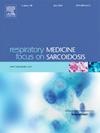Frailty in pulmonary hypertension: Establishing the frailty index and impact on survival
IF 3.1
3区 医学
Q2 CARDIAC & CARDIOVASCULAR SYSTEMS
引用次数: 0
Abstract
Background
Patients with pulmonary hypertension (PH) experience reduced physical capacity, which affects daily life functionality. Frailty signifies increased vulnerability due to diminished physiological reserves and is common in the elderly and those with chronic diseases, but has not been investigated in PH. This study aimed to create a frailty index for PH, to assess the prevalence of frailty, to determine frailty severity and progression over time and to establish a potential association between frailty and mortality in patients with PH.
Methods
This retrospective cohort study included patients with right heart catheter confirmed PH. Frailty was assessed using a cumulative frailty index (FI). Logistic regression, Cox proportional hazard models and causal mediation analyses were used to determine the relationship between frailty and time from FI assessment to death or censoring.
Results
After dropping 22 items with item-score correlation <0.7, a 30-item-FI was developed, demonstrating high internal consistency. At baseline 117/189 (62 %) patients were frail (FI > 0.12) and this proportion increased to 71 % at follow-up. Frail patients were older, had lower 6-min walk distance (6MWD), higher NT-proBNP, and lower pulmonary vascular resistance (PVR). Risk of death was significantly higher in patients with frailty after adjustment for age, sex, PVR, and PH treatment (HR 6.4, 95 % CI 2.14–19.1, p = 0.001); only a small proportion of this effect was mediated by 6MWD.
Conclusions
Frailty is common in PH and an independent risk factor for mortality beyond confounding/effect modification. Future research should explore underlying mechanisms and the utility of integrating frailty assessment in routine PH patient care.
肺动脉高压的衰弱:衰弱指数的建立及其对生存的影响
背景:肺动脉高压(PH)患者体能下降,影响日常生活功能。虚弱意味着由于生理储备减少而增加的脆弱性,在老年人和慢性病患者中很常见,但尚未在PH中进行调查。本研究旨在创建PH的虚弱指数,以评估虚弱的患病率。方法:本回顾性队列研究纳入经右心导管确认为ph的患者,采用累积衰弱指数(FI)评估患者的衰弱程度。采用Logistic回归、Cox比例风险模型和因果中介分析来确定脆弱性与FI评估至死亡或审查的时间之间的关系。结果在剔除22个项目得分相关系数为0.7的项目后,建立了一个30个项目的fi量表,具有较高的内部一致性。基线时117/189(62%)患者体弱(FI > 0.12),随访时这一比例增加到71%。虚弱患者年龄较大,6分钟步行距离(6MWD)较低,NT-proBNP较高,肺血管阻力(PVR)较低。在调整了年龄、性别、PVR和PH治疗后,虚弱患者的死亡风险明显更高(HR 6.4, 95% CI 2.14-19.1, p = 0.001);这种效应只有一小部分是由6MWD介导的。结论虚弱在PH中很常见,是除混杂/效应改变外的独立死亡危险因素。未来的研究应该探索潜在的机制和整合虚弱评估在常规PH患者护理中的效用。
本文章由计算机程序翻译,如有差异,请以英文原文为准。
求助全文
约1分钟内获得全文
求助全文
来源期刊

Respiratory medicine
医学-呼吸系统
CiteScore
7.50
自引率
0.00%
发文量
199
审稿时长
38 days
期刊介绍:
Respiratory Medicine is an internationally-renowned journal devoted to the rapid publication of clinically-relevant respiratory medicine research. It combines cutting-edge original research with state-of-the-art reviews dealing with all aspects of respiratory diseases and therapeutic interventions. Topics include adult and paediatric medicine, epidemiology, immunology and cell biology, physiology, occupational disorders, and the role of allergens and pollutants.
Respiratory Medicine is increasingly the journal of choice for publication of phased trial work, commenting on effectiveness, dosage and methods of action.
 求助内容:
求助内容: 应助结果提醒方式:
应助结果提醒方式:


